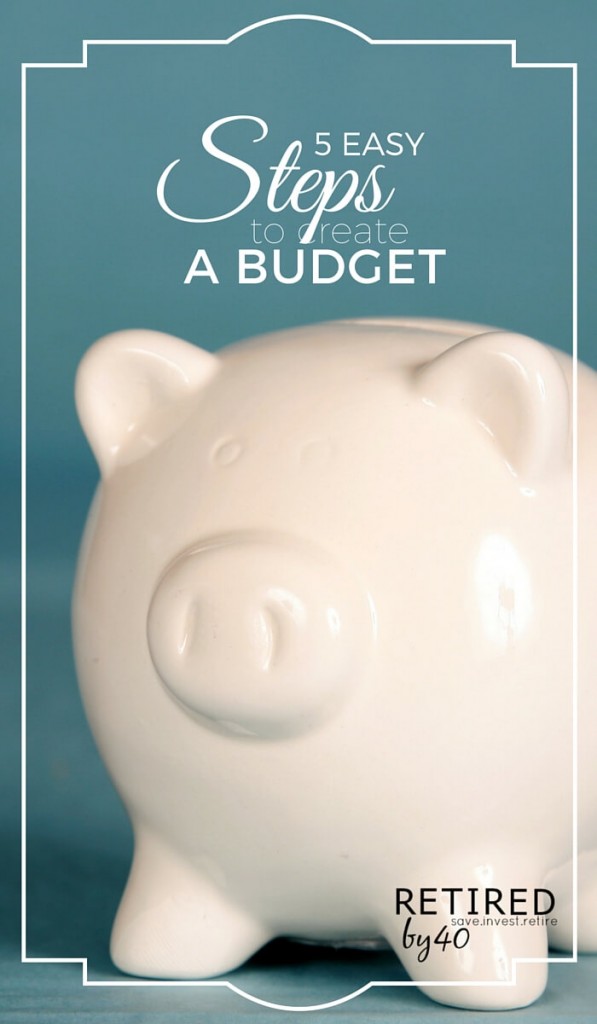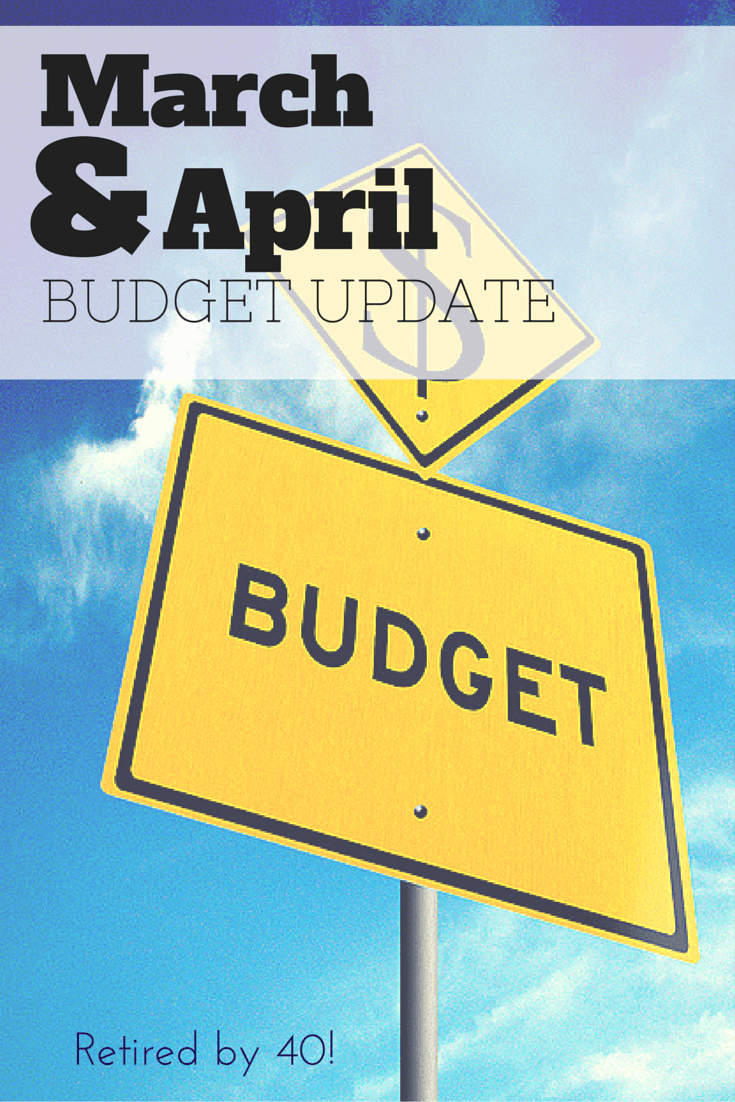How many of you groaned at the thought of reviewing your 2015 spending and working up a new budget for 2016?
I did.
That’s right, I bemoan taking time to review the highs and lows of our spending patterns, hashing out every budget line with the hubs, and then writing it down so we can stick to it.
I love how a budget helps us reach our financial goals, but setting it up just isn’t fun.
Honestly, I think budgeting should be a 4-letter word.
So, I’m going to make this as easy as possible.
That’s right, in 5 steps, you’re going to put together a budget that works for you and your family!
The 5 Basic Steps are:
- Determine How Much You Normally Spending
- Factor In Your Take-Home Pay
- Add In Fixed & Necessary Expenses
- Write In Discretionary Spending
- Find Ways to Cut/Make Extra Money
Review Total Spending
You can do this step however you want, whether its with Mint.com, Personal Capital, or your bank statements/written budget.
Whatever you choose, I want you to add up everything you spent last year. Mint.com and Personal Capital make this easy – and will even break down spending by category throughout the year. It might take a bit longer if you like pen and paper, but if you budgeted at all in 2015, this process should be fairly simple.
We use Personal Capital {it’s free!} to track our expenses across all of our accounts. Then, at the end of the month is it very easy to see our spending as a whole, and to review how we spent vs. how we meant to spend.
Tracking expenses is the single best way to keep your finances from getting out of control. 
You cannot make informed financial decisions if you don’t know how much you’re spending and where you’re spending it. I know that sounds harsh, but knowing how much we earn, save, spend, and repay on our debt each month is invaluable!
Personal Capital is our favorite tool. It is free, easy to use, and allows you to track your bank accounts, spending, budget, as well as your investments and their performance. If you’re not tracking your expenses yet, or are looking for a more comprehensive tracking tool, give Personal Capital a try.
{Try Personal Capital For Free Here}
Mint.com is another excellent, free tool for tracking expenses. It’s interface allows you to set budgets and track spending across all of your accounts, in addition to very basic investment integration. Mint.com’s downfall is that it does not provide detailed information about investment returns like Personal Capital does.
If you prefer the pen & paper method, a simple notebook will also work to track your expenses reliably. After only a month of tracking your expenses & budget, you will have a very clear picture of where your money is going.
Now, Take That Number and Divide By 12
This is the amount that you usually spend monthly.
Factor in Your Monthly Income
Either from your pay stubs, an online tool like Mint.com or Personal Capital, or your pen and paper method, determine your net income each month. If you draw a regular paycheck, this should be simple.
If your income is variable, this amount can be a bit harder to determine, but stick with it, because this step is essential.
Now, subtract your monthly spending from your monthly income, like this:
Monthly Income – Monthly Spending
Is your answer positive or negative?
In other words, did you spend more last year than you earned?
If you didn’t overextend your income last year, congratulations!
But if you spend too much, I don’t want you to stress or beat yourself up. Honestly, it happens to everyone, and I’m going to give you tools to deal with the over-spending in a moment.
Subtract Fixed & Necessary Expenses
Everyone has a different definition of “necessary” and “fixed” expenses, just like everyone’s spending will be different.
I am not here to tell you what you necessary and fixed expenses should be, but instead I want to encourage you to be honest with yourself and take a hard look at your spending. If an expense doesn’t meet a need – i.e. food, housing, clothing, transportation – then it should be considered necessary.
Some examples of fixed and necessary expenses:
- Rent/mortgage
- Car payment
- Auto/Home/Life Insurance
- Gas
- Utilities
- Groceries
- Retirement savings
- Saving for big expenses, such as taxes
Some of these necessary expenses will be fixed amounts, such as insurance, car payment, and rent/mortgage. Other I consider necessary, such as gas, utilities, and groceries, but their cost is not fixed month-to-month.
A quick note about monthly savings: Always save some percentage of your income, whether it is 1% or 20% (or more!) Just save something. 
It is also wise to think about any large expenses you have coming up during the year, such as property taxes. Divide the total amount you paid in 2015 by 12, and then factor that number into your monthly budget.
Write down your monthly income, and then subtract these necessary expenses from your income, one by one. {The free budgeting worksheet at the bottom of the page will walk you through this}
These non-fixed necessary expenses an also be cut down if you are spending too much. I’ll give you 33 strategies for cutting expenses tomorrow, if you find that your budget is stretched too thin.
Write In Discretionary Spending
Now, subtract every other expense you can think of, even if it causes your total to go negative. Other expenses can be:
- Cell phone
- Cable TV
- Date Nights
- Entertainment
- Hobby Spending
- Clothing
- Saving for vacations, Christmas, birthdays, etc
Saving for big expenses throughout the year is the single best way to keep away from credit card debt all year long!
To save for your vacation, Christmas, birthday, or whatever other discretionary big expense you have coming up (or had in 2015), take the total amount spent in 2015 and divide it by 12. This is the amount you need to save each month. Make this a priority!
Think about the goals you worked through yesterday – have you factored these goals into your budget? Are you saving for them on a monthly basis?
{Saving for more than one goal? Set up free, easy-to-use savings accounts with Capital One 360.}
Now you have to take stock of your expenses vs. your income: if the number you ended up with, after subtracting all expenses from your income is negative, you will need to move on to the next section to think about some creative ways to cut your budget without sacrificing quality of life, or make some extra money.
If the number is positive, then congratulations, you have a balanced budget! With the excess, you can put more money into savings, either for a rainy day, or to save up for something you really want!
{Want to save even more? Check out this list of ways to cut your budget without feeling deprived}
What To Do If There’s Not Enough Money
If you just learned that there is not enough money for your month, don’t panic! There are so many ways to cut your budget or make extra money and rescue your budget all year long!
First, realize that your budget is a fluid thing.
You’ve come up with the best budget for your family now, but expenses, income, and so many other things can change at a moment’s notice. When they do, it’s ok to change your budget!
I go over my budget every month with Marriage & Money to make sure that changes are accounted for, and to make sure that I’m not setting unrealistic expectations for lowering my spending. This gives me an opportunity to look for ways to save, and hold me accountable to my spending habits.
Completely, rewritten, revised, and expanded, Marriage & Money is the best way I’ve found to not only form a budget that works for you, but to communicate with your spouse and family not only about your budget, but about your financial goals & dreams.
The Introduction will get you started on the concept of building a budget in 5 easy steps, and then help you to develop a communication strategy with your spouse & family so that your budget can be successful!
Included in this book is the 2016 Goal Planning Workbook so that your passions and dreams for 2016 can align with your the budget you set up for the year!
Finally, Marriage & Money contains 12 months of budget templates, 12 months of bill pay schedules, a place to keep important passwords and reminders + 52 budget meeting forms that can be filled out as your an your family complete weekly budget meetings and hold yourself accountable to your budget.
‘);
// ]]>
No matter how or when you budget, Marriage & Money will provide positive help & inspiration for your journey to the life you want!
Budgeting is actually very simple, as long as you stay on top of it!
To Your Best 2016,
P.S. – Don’t forget to share this post to earn entries into January’s giveaways!
a Rafflecopter giveaway
This post may contain affiliate links. See my disclosures for more information.

















[…] 3 Free Money Management Tools […]